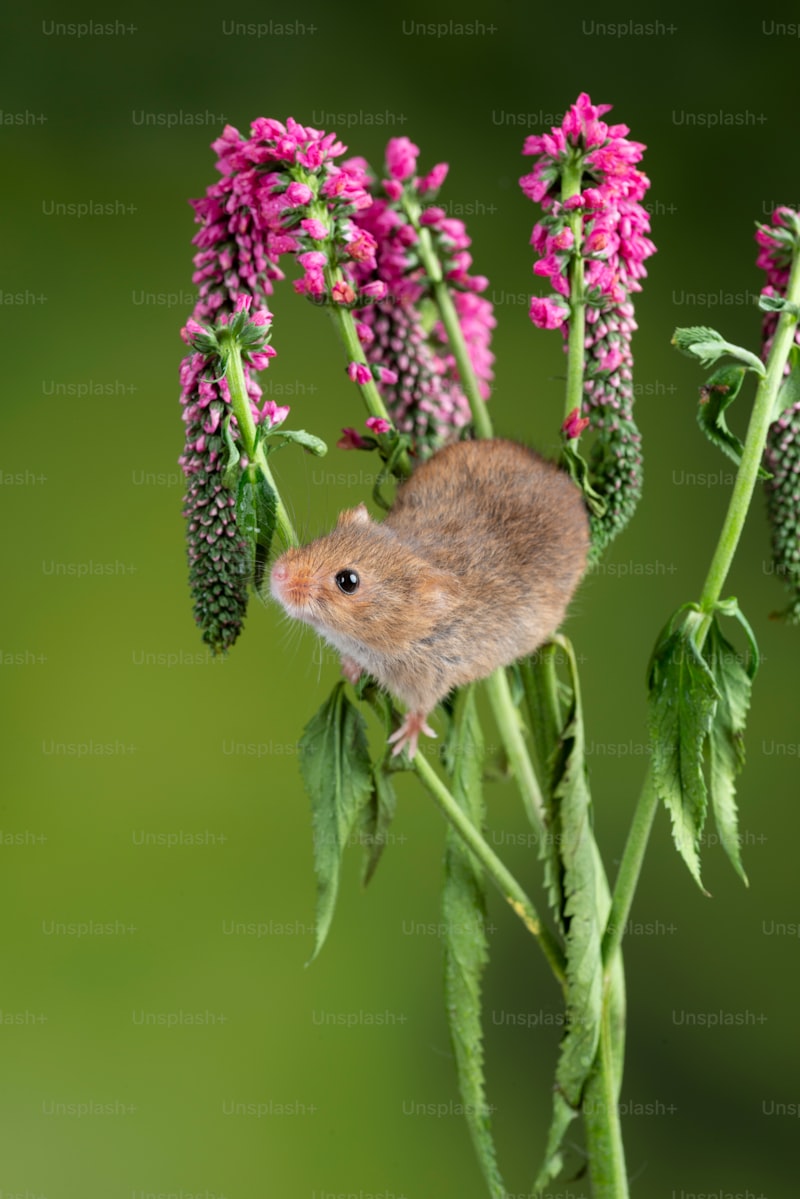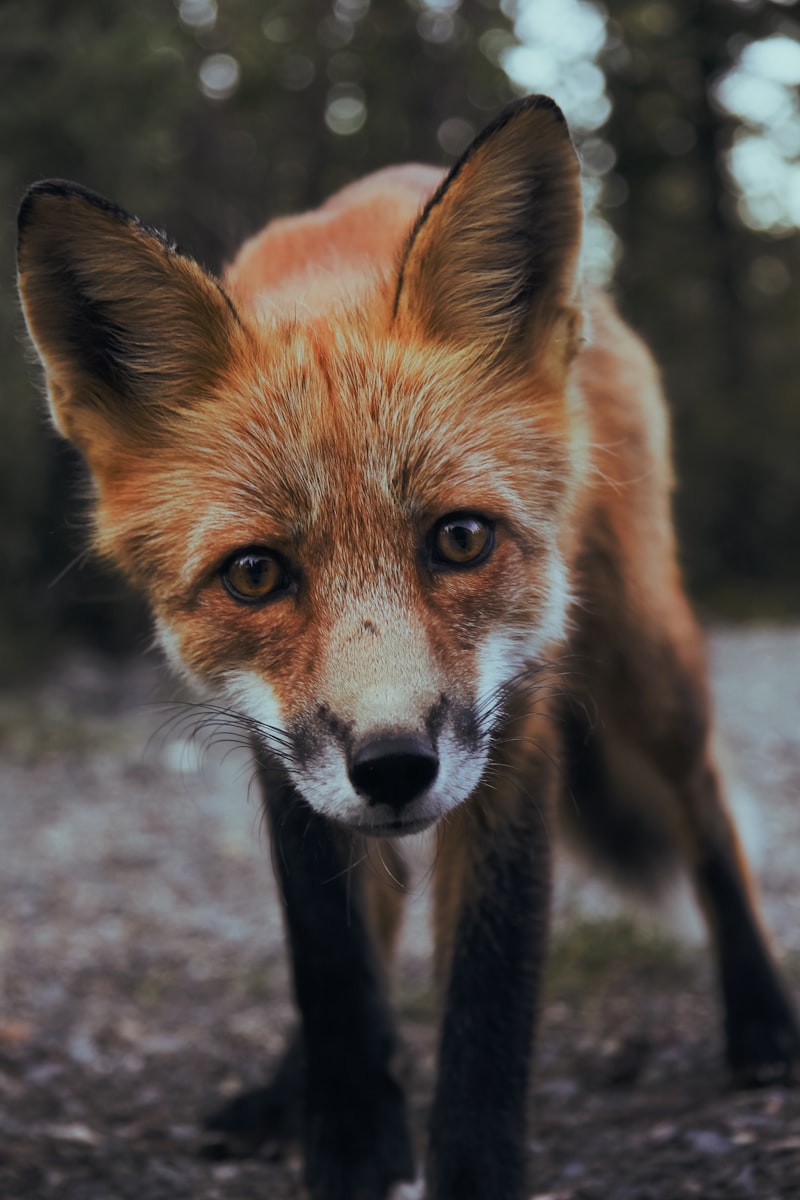Bioinformatics plays a crucial role in advancing wildlife research, offering powerful tools to analyze biological data and uncover intricate patterns that are essential for conservation efforts and understanding ecological dynamics. In the realm of wildlife biology, bioinformatics merges biology with computational techniques, allowing researchers to delve deep into genetic diversity, population dynamics, and ecological interactions.
One of the key applications of bioinformatics in wildlife research is in DNA sequencing and analysis. By sequencing genomes of various species, scientists can decipher genetic variations that underpin adaptation, disease resistance, and evolutionary history. This information is pivotal for conservation strategies, helping identify unique genetic traits that are crucial for species survival in changing environments.
Moreover, bioinformatics aids in studying complex ecological networks. Through computational models and data analysis, researchers can map out food webs, migration patterns, and interactions between species. This holistic view of ecosystems provides insights into how disturbances or environmental changes impact biodiversity and ecological stability.
In conservation biology, bioinformatics enables predictive modeling to assess the effects of habitat loss, climate change, and human activities on wildlife populations. By integrating genomic data with environmental factors, scientists can forecast population trends and prioritize conservation efforts effectively.
Furthermore, bioinformatics accelerates research through data sharing and collaboration. Large-scale databases and bioinformatics tools allow researchers worldwide to access and analyze data collaboratively, fostering a global approach to wildlife conservation and management.
In essence, bioinformatics revolutionizes wildlife research by harnessing computational power to unravel biological mysteries and inform conservation strategies. As technology advances, bioinformatics will continue to play a pivotal role in preserving biodiversity and understanding the intricate web of life on our planet.
Unlocking Nature’s Secrets: How Bioinformatics Revolutionizes Wildlife Research
Bioinformatics is like the Swiss army knife of biology. It combines biology, computer science, and information technology to analyze biological data, and wildlife researchers are harnessing this power to unlock mysteries that were once hidden in the DNA of animals.
Imagine you’re a scientist studying a rare species of birds in the Amazon rainforest. Through bioinformatics, you can sequence the DNA extracted from a feather found on the forest floor. This sequence isn’t just a string of letters; it’s a treasure trove of information about the bird’s ancestry, health, and even its future survival prospects in a changing climate.
What’s fascinating is how bioinformatics transforms this raw genetic data into meaningful insights. Researchers use sophisticated algorithms to compare DNA sequences across species, identifying similarities and differences that reveal evolutionary relationships and adaptations. It’s like solving a complex puzzle where each piece (or gene) tells a unique story about the species it belongs to.
Moreover, bioinformatics isn’t limited to just genetics. It extends to analyzing vast amounts of ecological data collected from GPS-tagged animals, satellite imagery, and environmental sensors. By integrating these diverse data streams, researchers gain a holistic view of ecosystems, from migration patterns to habitat preferences, all crucial for effective conservation strategies.

In essence, bioinformatics is revolutionizing wildlife research by providing tools to decode nature’s blueprints. It’s not only enhancing our knowledge of biodiversity but also guiding conservation efforts to protect endangered species and preserve delicate ecosystems for future generations.
Next time you hear about a breakthrough in wildlife conservation, chances are bioinformatics played a crucial role behind the scenes. It’s a testament to how blending science with technology can unravel the mysteries of the natural world, ensuring that we continue to learn, appreciate, and safeguard the wonders of wildlife.
From Genome to Habitat: Bioinformatics’ Role in Wildlife Conservation
Imagine bioinformatics as a powerful lens that allows researchers to peer deep into the genetic makeup of endangered animals. It helps identify key genetic markers that indicate population health and resilience. For instance, by sequencing the genomes of endangered species like the Sumatran tiger or the African elephant, scientists can pinpoint genetic variations that may affect their ability to adapt to changing environments or resist diseases.
Moreover, bioinformatics doesn’t stop at the laboratory; it extends its impact into the field of conservation biology. Conservationists use this data to map out habitats that are critical for species survival. By understanding the genetic diversity within populations, they can prioritize areas for protection or restoration efforts. This approach ensures that conservation resources are allocated efficiently, maximizing the impact on biodiversity conservation.
In essence, bioinformatics acts as a compass guiding wildlife conservation efforts in the 21st century. It empowers scientists with the tools to make informed decisions based on comprehensive genetic data. By integrating genomics with ecological data, researchers can unravel complex relationships between species and their environments. This holistic approach is essential for safeguarding our planet’s rich biodiversity for future generations.
As technology advances and genomic sequencing becomes more accessible, the role of bioinformatics in wildlife conservation will only grow. It holds the promise of unlocking new discoveries and innovative conservation strategies that are both effective and sustainable. Ultimately, bioinformatics stands at the forefront of efforts to preserve Earth’s natural heritage, ensuring that every species has a fighting chance in an ever-changing world.
Data Driven Conservation: The Power of Bioinformatics in Protecting Wildlife
Bioinformatics isn’t just about crunching numbers—it’s about decoding the genetic blueprints of endangered animals, understanding their habitats, and predicting threats before they strike. It’s like having a crystal ball that shows us the future of wildlife conservation.
At its core, bioinformatics uses advanced algorithms to analyze vast amounts of genetic data collected from various species. Think of it as a massive puzzle where each piece is a gene sequence, and the picture it forms reveals crucial information about biodiversity and evolutionary relationships. By studying these sequences, scientists can uncover hidden patterns, track population trends, and even detect diseases that threaten entire ecosystems.
Take, for instance, the plight of the majestic Bengal tiger. Through bioinformatics, researchers can sequence its genome, pinpoint genetic variations that affect survival, and devise strategies to ensure its long-term existence. It’s not just about saving a single species but preserving entire ecosystems that rely on these apex predators.
Moreover, bioinformatics isn’t confined to laboratories—it’s a field that thrives on collaboration. Conservationists, geneticists, data scientists, and policymakers come together like a symphony orchestra, each playing their part to harmonize wildlife protection efforts.
The beauty of bioinformatics lies in its versatility. Whether it’s identifying illegal wildlife trade through DNA analysis or understanding how climate change alters migration patterns, this field adapts to new challenges with precision and foresight.
In essence, data-driven conservation powered by bioinformatics isn’t just a tool; it’s a revolution. It allows us to look into the genetic makeup of wildlife like never before, guiding us towards informed decisions that can shape the future of biodiversity on Earth. As we continue to unlock the mysteries of nature through data, one thing becomes clear: the future of wildlife conservation is in safe hands—ours.
Mapping Wildlife Genomes: Bioinformatics’ Impact on Biodiversity Studies
In the vast realm of biodiversity research, mapping wildlife genomes has emerged as a groundbreaking endeavor, powered significantly by the advancements in bioinformatics. This fusion of biology and computer science has revolutionized how scientists perceive and study wildlife diversity across the globe.
Bioinformatics serves as the backbone of genome mapping, utilizing computational techniques to analyze vast amounts of genetic data extracted from various species. It enables researchers to decode the intricate sequences of DNA that define each organism, providing insights into their evolutionary history, adaptations, and ecological roles. Imagine bioinformatics as a powerful lens that zooms into the genetic blueprint of every living creature, unraveling its secrets with unprecedented clarity.
One of the marvels of this approach lies in its ability to facilitate comparative genomics. By comparing the genomes of different species or populations, scientists can pinpoint genetic variations that contribute to biodiversity. These variations are not just academic curiosities; they hold profound implications for conservation efforts. For instance, identifying genes associated with disease resistance or environmental adaptation can guide conservationists in selecting individuals for breeding programs aimed at preserving endangered species.
Moreover, bioinformatics fuels large-scale biodiversity studies by integrating genomic data with environmental and behavioral data. This interdisciplinary approach paints a comprehensive picture of how genetic diversity interacts with ecological factors to shape ecosystems. It’s akin to assembling a puzzle where each genomic sequence represents a crucial piece that influences the broader ecological landscape.
Rhetorical questions naturally arise: How can the mapping of genomes help conserve wildlife? What role does bioinformatics play in unraveling the mysteries of biodiversity? These questions invite us to delve deeper into the intricate web of life, where every species, from the smallest microbe to the largest mammal, contributes uniquely to our planet’s richness.
In essence, bioinformatics empowers biodiversity studies by transforming raw genetic data into actionable knowledge. It bridges the gap between theory and practice, offering tools that are indispensable in our quest to understand, protect, and sustain the diverse tapestry of life on Earth. As we continue to map wildlife genomes, the insights gained will not only expand our scientific horizons but also shape conservation strategies for generations to come.
Predicting Extinction Risks: Bioinformatics Tools Transform Wildlife Research
In today’s rapidly changing world, the conservation of wildlife species faces unprecedented challenges. Climate change, habitat loss, and human activity threaten numerous species with extinction. However, advancements in bioinformatics are revolutionizing how researchers assess and predict extinction risks, offering new hope for conservation efforts.
Bioinformatics, a field that merges biology with computer science, plays a crucial role in analyzing vast amounts of genetic and ecological data. By harnessing powerful algorithms and computational models, scientists can now decipher complex genetic codes and understand how environmental factors influence species survival.
One of the key tools in bioinformatics is DNA sequencing. This technology allows researchers to map the entire genome of species, providing invaluable insights into their genetic diversity and susceptibility to environmental stressors. For instance, by comparing the genomes of different populations within a species, scientists can identify genes associated with adaptations to specific habitats or traits that may confer resilience against threats.
Another pivotal application is ecological modeling, where bioinformatics helps integrate genetic data with environmental variables. This approach enables scientists to predict how changes in climate or land use will impact species distributions and population dynamics. By simulating various scenarios, researchers can identify critical habitats that should be prioritized for conservation efforts.
Moreover, bioinformatics facilitates the analysis of complex ecological networks and species interactions. By studying food webs and ecological niches, scientists can better understand the cascading effects of species loss and devise strategies to mitigate these impacts.
In essence, bioinformatics empowers conservation biologists with unprecedented tools to assess and predict extinction risks with greater accuracy. These tools not only enhance our understanding of biodiversity dynamics but also inform policy decisions aimed at protecting vulnerable species.
As we continue to face environmental challenges, the integration of bioinformatics into wildlife research offers a beacon of hope for the future of conservation. By leveraging cutting-edge technology and interdisciplinary approaches, scientists are paving the way towards more effective strategies to preserve Earth’s precious biodiversity.
DNA Barcoding Wildlife: Bioinformatics’ Role in Species Identification
Have you ever wondered how scientists can accurately identify different species of wildlife, even ones that look almost identical to the untrained eye? The answer lies in a fascinating field called DNA barcoding, where bioinformatics plays a crucial role.
Imagine you’re in a dense rainforest, surrounded by various species of butterflies fluttering around. Some might look incredibly similar in appearance, making it challenging to distinguish one from another based on looks alone. This is where DNA barcoding comes into play. Instead of relying on physical characteristics, scientists extract DNA samples from these butterflies.
DNA barcoding is like scanning a product at a store — each species has its unique barcode, which is essentially a short sequence of DNA that acts as an identifier. This barcode is obtained through a process called sequencing, where the DNA is decoded to reveal its unique genetic makeup.
Now, you might wonder, how does bioinformatics fit into this picture? Bioinformatics is the technology and software that processes and analyzes vast amounts of biological data, including DNA sequences. In the case of DNA barcoding, bioinformatics tools compare the obtained DNA sequence with a vast database of known sequences. This comparison helps scientists quickly and accurately identify the species in question.

Think of bioinformatics as a powerful detective that sifts through massive libraries of genetic information to find a match. It’s like finding a needle in a haystack, but instead of hay, we’re dealing with billions of DNA base pairs!
The applications of DNA barcoding and bioinformatics extend far beyond butterflies. They are used in identifying endangered species, monitoring wildlife trafficking, and even studying biodiversity in environments as diverse as coral reefs and polar ice caps.
DNA barcoding coupled with bioinformatics is revolutionizing the way we identify and understand wildlife species. By harnessing the power of genetics and computational analysis, scientists can preserve biodiversity and unravel the mysteries of the natural world with unprecedented accuracy and efficiency.
Frequently Asked Questions
How can bioinformatics contribute to understanding the impact of environmental changes on wildlife?
Discover how bioinformatics aids in understanding the effects of environmental changes on wildlife through advanced computational analysis of genetic, ecological, and environmental data. Gain insights into evolutionary responses, biodiversity shifts, and adaptation strategies crucial for conservation efforts.
How does bioinformatics help analyze genetic diversity in wildlife?
Bioinformatics helps analyze genetic diversity in wildlife by utilizing computational tools and algorithms to process and interpret large-scale genetic data. This approach enables researchers to compare genomes, identify genetic variations, study evolutionary relationships, and assess population dynamics across species. By integrating biology with data science, bioinformatics enhances our understanding of biodiversity and supports conservation efforts.
What are some bioinformatics tools commonly used in wildlife conservation studies?
Discover commonly used bioinformatics tools in wildlife conservation studies, essential for analyzing genetic diversity, population dynamics, and habitat suitability. Learn how these tools aid in species management and conservation efforts worldwide.
What is bioinformatics and how is it used in wildlife research?
Discover how bioinformatics applies computational techniques to analyze biological data, aiding wildlife research by unraveling genetic patterns, tracking populations, and understanding ecosystems.
What are the key applications of bioinformatics in studying wildlife populations?
Learn about the essential applications of bioinformatics in analyzing wildlife populations, including genetic diversity studies, conservation genetics, population dynamics modeling, and ecological niche modeling.



